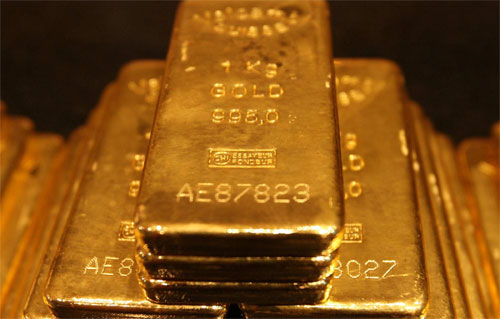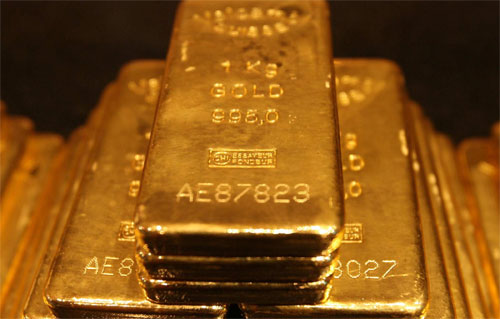
Agnico-Eagle
Thomson Reuters GFMS published a study on global production and consumption of gold in the first half of the year. According to the published data, the volume of mining of metal was 1574 tons; this number exceeded the result of 2017 by 22 tons. At the same time, the processing of precious scrap yielded an additional 624 tons, which is 2 tons less than in the same period of 2017. Simultaneously, there was a sharp decline in demand for metal. According to GFMS, gold consumption for the reporting period was 1916 tons, which is 145 tons less than in the first half of 2017. As a result, the metal surplus in the world market reached a maximum of 315 tons over the past year and a half.
Investors and jewelers played the key role in reducing global gold consumption. Consumption of metal jewelry industry declined by 74 tons, to 1021 tons, mainly due to a decrease of 40 tons of demand for gold from jewelers in India.
The decrease in investment demand can primarily be explained by the activity of exchange index funds, whose assets increased by only 35 tons in the first half of the year. This is more than four times lower than last year's indicator (145 tons). Professional investors have lost interest in the metal against the backdrop of the tightening monetary policy of the US Federal Reserve. Since the beginning of the year, the US regulator has already raised the base interest rate twice (to 1.75-2%), and is preparing for two more increases by the end of the year.
Only private investors and some central banks continue to willingly buy gold. According to GFMS, for the half-year retail investors bought 510 tons of physical gold, which is 18 tons more than a year ago. At the same time, central banks purchased 176 tons of gold in aggregate, compared to 157 tons a year earlier. The Russian Central Bank remains the main buyer of the precious metal. Since the beginning of the year, it has acquired almost 90 tons of gold and brought the volume of metal in reserves to 1928 tons. The central bank of Turkey (36.2 tons) and the National Bank of Kazakhstan (17.8 tons) have significantly increased their gold reserves as well. Central banks increase investments in precious metal to maintain the stability of national currencies and reduce dependence on the actions of the US and the European Union.
Under such conditions, the value of metal is being reduced. According to Reuters, for the half-year the price of gold decreased by almost 4%, to $ 1252 per troy ounce, although at the beginning of the year the price reached $ 1366 per ounce. Currently, quotes are close to $ 1220 per ounce, which is close to the minimum value since July 2017.
source: reuters.com
Investors and jewelers played the key role in reducing global gold consumption. Consumption of metal jewelry industry declined by 74 tons, to 1021 tons, mainly due to a decrease of 40 tons of demand for gold from jewelers in India.
The decrease in investment demand can primarily be explained by the activity of exchange index funds, whose assets increased by only 35 tons in the first half of the year. This is more than four times lower than last year's indicator (145 tons). Professional investors have lost interest in the metal against the backdrop of the tightening monetary policy of the US Federal Reserve. Since the beginning of the year, the US regulator has already raised the base interest rate twice (to 1.75-2%), and is preparing for two more increases by the end of the year.
Only private investors and some central banks continue to willingly buy gold. According to GFMS, for the half-year retail investors bought 510 tons of physical gold, which is 18 tons more than a year ago. At the same time, central banks purchased 176 tons of gold in aggregate, compared to 157 tons a year earlier. The Russian Central Bank remains the main buyer of the precious metal. Since the beginning of the year, it has acquired almost 90 tons of gold and brought the volume of metal in reserves to 1928 tons. The central bank of Turkey (36.2 tons) and the National Bank of Kazakhstan (17.8 tons) have significantly increased their gold reserves as well. Central banks increase investments in precious metal to maintain the stability of national currencies and reduce dependence on the actions of the US and the European Union.
Under such conditions, the value of metal is being reduced. According to Reuters, for the half-year the price of gold decreased by almost 4%, to $ 1252 per troy ounce, although at the beginning of the year the price reached $ 1366 per ounce. Currently, quotes are close to $ 1220 per ounce, which is close to the minimum value since July 2017.
source: reuters.com


















